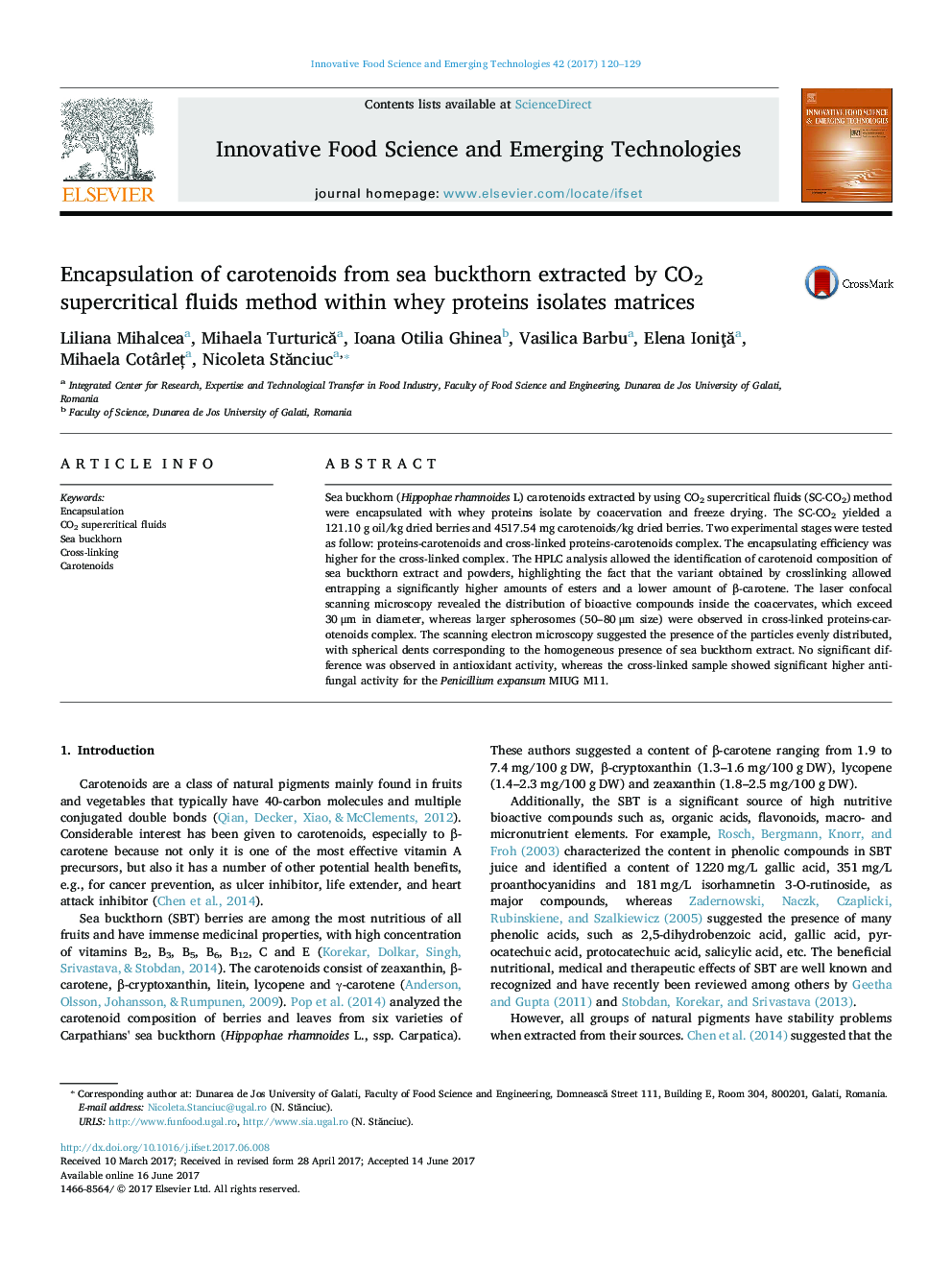| Article ID | Journal | Published Year | Pages | File Type |
|---|---|---|---|---|
| 5521725 | Innovative Food Science & Emerging Technologies | 2017 | 10 Pages |
â¢Sea buckhorn carotenoids were extracted by CO2 supercritical fluids method.â¢The encapsulation efficiency was higher for the cross-linked complex.â¢The cross-linked samples contained higher amounts of carotenoids esters.â¢Larger spherosomes were observed in cross-linked complex.â¢The cross-linked sample showed higher antifungal activity.
Sea buckhorn (Hippophae rhamnoides L) carotenoids extracted by using CO2 supercritical fluids (SC-CO2) method were encapsulated with whey proteins isolate by coacervation and freeze drying. The SC-CO2 yielded a 121.10 g oil/kg dried berries and 4517.54 mg carotenoids/kg dried berries. Two experimental stages were tested as follow: proteins-carotenoids and cross-linked proteins-carotenoids complex. The encapsulating efficiency was higher for the cross-linked complex. The HPLC analysis allowed the identification of carotenoid composition of sea buckthorn extract and powders, highlighting the fact that the variant obtained by crosslinking allowed entrapping a significantly higher amounts of esters and a lower amount of β-carotene. The laser confocal scanning microscopy revealed the distribution of bioactive compounds inside the coacervates, which exceed 30 μm in diameter, whereas larger spherosomes (50-80 μm size) were observed in cross-linked proteins-carotenoids complex. The scanning electron microscopy suggested the presence of the particles evenly distributed, with spherical dents corresponding to the homogeneous presence of sea buckthorn extract. No significant difference was observed in antioxidant activity, whereas the cross-linked sample showed significant higher antifungal activity for the Penicillium expansum MIUG M11.
